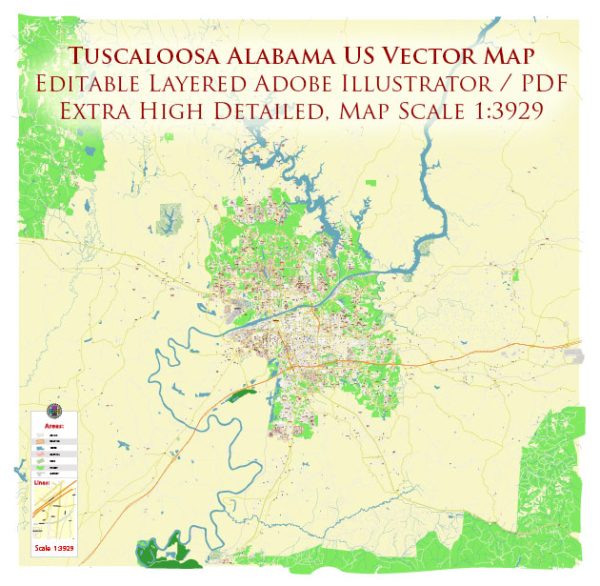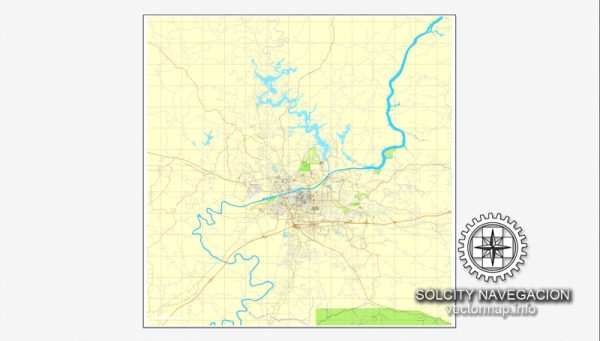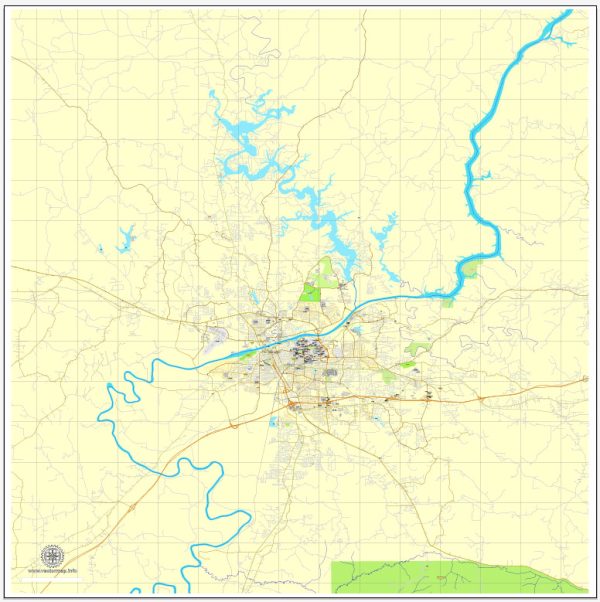Tuscaloosa, located in west-central Alabama, has a rich history that reflects its role as an important center in the state. Here’s an overview of Tuscaloosa’s history of urban development:
- Native American Presence: Before European settlement, the area around Tuscaloosa was inhabited by Native American peoples, including the Creek and Choctaw tribes. The presence of the Black Warrior River and fertile land made the region attractive for settlement.
- Early European Settlement and Forts (18th century): The first European settlers arrived in the Tuscaloosa area in the early 19th century. The region became part of the Mississippi Territory and later the Alabama Territory. In the early 19th century, Fort Stoddert and Fort Madison were established near present-day Tuscaloosa as part of the defensive network against Native American resistance.
- Selection as State Capital (1826-1846): In 1826, Tuscaloosa was chosen as the capital of Alabama, succeeding Cahaba. This decision led to increased development and the construction of important public buildings, including the Alabama State Capitol and the University of Alabama.
- University of Alabama (1831): The University of Alabama was founded in Tuscaloosa in 1831, becoming the state’s flagship university. The campus and its architecture have played a significant role in the city’s development and cultural identity.
- Antebellum Period and Civil War (19th century): The antebellum period saw the expansion of the cotton economy, and Tuscaloosa thrived as a center for commerce and education. However, the Civil War had a profound impact on the city. In 1865, during the Battle of Tuscaloosa, Union forces occupied the city and destroyed parts of the University of Alabama.
- Reconstruction and Industrialization (Late 19th – Early 20th century): Following the Civil War, Tuscaloosa went through a period of reconstruction. The economy diversified, and the city experienced industrial growth, with the establishment of industries such as manufacturing and coal mining.
- 20th Century and Civil Rights Movement: Tuscaloosa played a role in the Civil Rights Movement of the 20th century. The University of Alabama gained national attention in 1963 when Governor George Wallace attempted to block the enrollment of African-American students. This event, known as the “Stand in the Schoolhouse Door,” marked a significant moment in the struggle for desegregation.
- Modern Urban Development: In recent decades, Tuscaloosa has continued to grow and evolve. The city has seen urban renewal projects, the expansion of the University of Alabama, and the development of new residential and commercial areas. The Riverwalk and the Tuscaloosa Amphitheater are examples of recent additions contributing to the city’s recreational and cultural amenities.
Today, Tuscaloosa stands as a vibrant city with a mix of historical landmarks, educational institutions, and a diverse economy. Its history is deeply intertwined with the broader history of Alabama and the United States.




 Author: Kirill Shrayber, Ph.D.
Author: Kirill Shrayber, Ph.D.